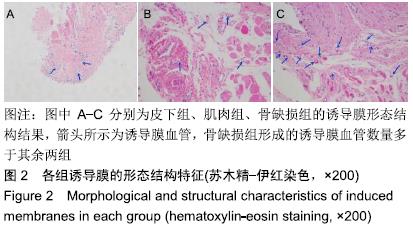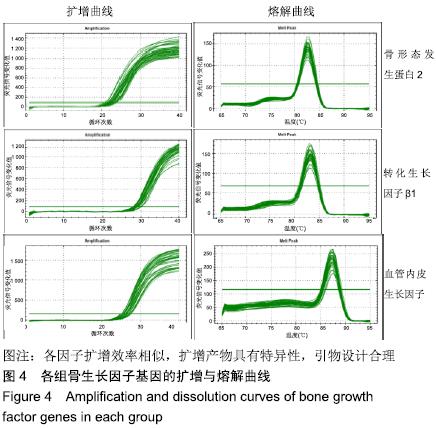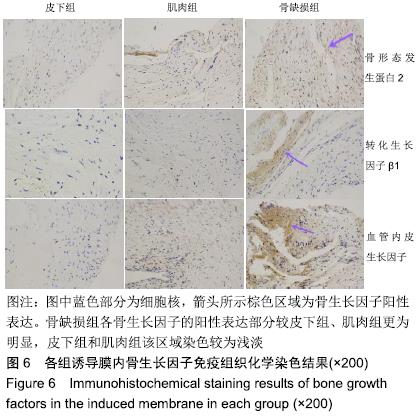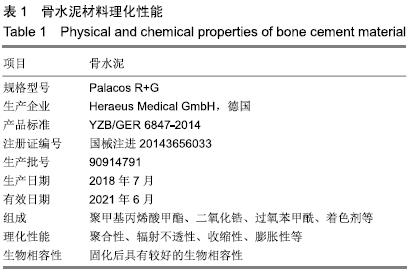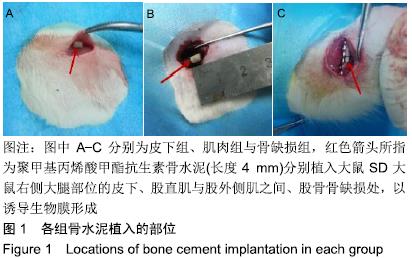[1] CATAGNI MA,AZZAM W,GUERRESCHI F,et al.Trifocal versus bifocal bone transport in treatment of long segmental tibial bone defects.Bone Joint J. 2019;101-B(2):162-169.
[2] LI JJ,DUNSTAN CR,ENTEZARI A,et al. A Novel Bone Substitute with High Bioactivity, Strength, and Porosity for Repairing Large and Load-Bearing Bone Defects.Adv Healthc Mater. 2019;8(8):e1801298.
[3] PIACENTINI F,CEGLIA MJ,BETTINI L,et al. Induced membrane technique using enriched bone grafts for treatment of posttraumatic segmental long bone defects.J Orthop Traumatol. 2019;20(1):13.
[4] GUPTA S,MALHOTRA A,JINDAL R,et al. Role of Beta Tri-calcium Phosphate- based Composite Ceramic as Bone-Graft Expander in Masquelet's- Induced Membrane Technique.Indian J Orthop. 2019;53(1): 63-69.
[5] WANG J,YIN Q,GU S,et al.Induced membrane technique in the treatment of infectious bone defect: A clinical analysis.Orthop Traumatol Surg Res.2019;105(3):535-539.
[6] DEBAUN MR,STAHL AM,DAOUD AI,et al. Preclinical induced membrane model to evaluate synthetic implants for healing critical bone defects without autograft.J Orthop Res. 2019;37(1):60-68.
[7] TOTH Z,ROI M,EVANS E, et al. Masquelet Technique: Effects of Spacer Material and Micro-topographyon Factor Expression and Bone Regeneration.Ann Biomed Eng. 2019;47(2):174-189.
[8] GIOTIKAS D,TARAZI N,SPALDING L,et al.Results of the Induced Membrane Technique in the Management of Traumatic Bone Loss in the Lower Limb: ACohort Study.J Orthop Trauma. 2019;33(3):131-136.
[9] MASQUELET AC,KISHI T,BENKO PE,et al.Very long-term results of post-traumatic bone defect reconstruction by the induced membrane technique.Orthop Traumatol Surg Res. 2019;105(1):159-166.
[10] CUI T, LI J, ZHEN P, et al.Masquelet induced membrane technique for treatment of rat chronic osteomyelitis.Exp Ther Med. 2018;16(4): 3060-3064.
[11] PELISSIER PH, MASQUELET AC, BAREILLE R ,et al.Induced membranes secrete growth factors including vascular and osteoinductive factors and could stimulate bone regeneration.J Orthop Res. 2004;22(1):73-79.
[12] HENRICH D, SEEBACH C, NAU C, et al.Establishment and characterization of the Masquelet induced membrane technique in a rat femur critical-sized defect model.J Tissue Eng Regen Med. 2016;10(10): E382-E396.
[13] LI A, RIEVESCHL NB, CONTI FF, et al.Long-Term Assessment of Macular Atrophy in Patients with Age-Related Macular Degeneration Receiving Anti-Vascular Endothelial Growth Factor.Ophthalmol Retina. 2018;2(6): 550-557.
[14] HOSODA Y, MIYATA M, UJI A, et al.Novel Predictors of Visual Outcome in Anti-VEGF Therapy for Myopic Choroidal Neovascularization Derived Using OCT Angiography. Ophthalmol Retina.2018;2(11):1118-1124.
[15] KOLOSTOVA K, TALTYNOV O, PINTEROVA D, et al.Tissue repair driven by two different mechanisms of growth factor plasmids VEGF and NGF in mice auricular cartilage: regeneration mediated by administering growth factor plasmids.Eur Arch Otorhinolaryngol. 2012;269(7):1763-1770.
[16] ZHANG R, LIANG Y, WEI S.The expressions of NGF and VEGF in the fracture tissues are closely associated with accelerated clavicle fracture healing in patients with traumatic brain injury.Ther Clin Risk Manag. 2018;14:2315-2322.
[17] MANZANO-MORENO FJ, COSTELA-RUIZ VJ, MELGUIZO-RODRÍGUEZ L, et al. Inhibition of VEGF gene expression in osteoblast cells by different NSAIDs.Arch Oral Biol.2018;92:75-78.
[18] HU K, OLSEN BR.Osteoblast-derived VEGF regulates osteoblast differentiation and bone formation during bone repair.J Clin Invest. 2016;126(2):509-526.
[19] D’AMORE PA.Vascular endothelial cell growth factor-a not just for endothelial cells anymore. Am J Pathol.2007;171(1):14-18.
[20] YOON SJ, YOO Y, NAM SE, et al. The Cocktail Effect of BMP-2 and TGF-β1 Loaded in Visible Light-Cured Glycol Chitosan Hydrogels for the Enhancement of Bone Formation in a Rat Tibial Defect Model.Mar Drugs. 2018;16(10):351.
[21] ASPARUHOVA MB, CABALLÉ-SERRANO J, BUSER D, et al. Bone-conditioned medium contributes to initiation and progression of osteogenesis by exhibiting synergistic TGF-β1/BMP-2 activity l.Int J Oral Sci. 2018;10(4):20.
[22] JEONG SY, HONG JU, SONG JM, et al.Combined effect of recombinant human bone morphogenetic protein-2 and low level laser irradiation on bisphosphonate-treated osteoblasts.J Korean Assoc Oral Maxillofac Surg.2018;44:259-268.
[23] AQUINO-MARTÍNEZR, ARTIGAS N, GÁMEZB, et al. Extracellular calcium promotes bone formation from bone marrow mesenchymal stem cells by amplifying the effects of BMP-2 on SMAD signalling. PLoS One. 2017; 12(5): e0178158.
[24] MANIKANDAN M, ABUELREICH S, ELSAFADI M, et al.NR2F1 mediated down-regulation of osteoblast differentiation was rescued by bone morphogenetic protein-2 (BMP-2) in human MSC. Differentiation. 2018;104:36-41.
[25] DANG LHN, KIM YK, KIM SY, et al.Radiographic and histologic effects of bone morphogenetic protein-2/hydroxyapatite within bioabsorbable magnesium screws in a rabbit model.J Orthop Surg Res.2019;14(1): 117.
[26] RUEHLE MA, KRISHNAN L, VANTUCCI CE, et al.Effects of BMP-2 dose and delivery of microvascular fragments on healing of bone defects with concomitant volumetric muscle loss.J Orthop Res.2019; 37(3):553-561.
[27] CANNADA LK.A Randomized Controlled Trial Comparing rhBMP-2/ ACS vs. Autograft for the Treatment of Tibia Fractures with Critical Size Defects.J Orthop Trauma. 2019 Apr 19. doi: 10.1097/BOT. 0000000000001492. [Epub ahead of print]
[28] 苏佳灿,曹烈虎,石长贵,等.骨生长因子[M].上海:第二军医大学出版社, 2015:58.
|

